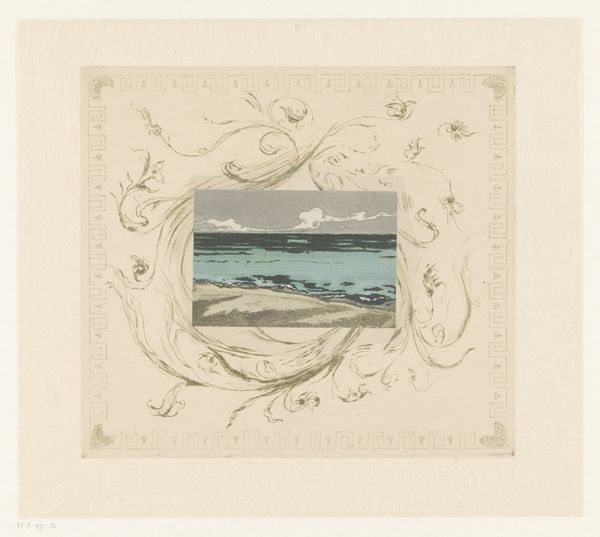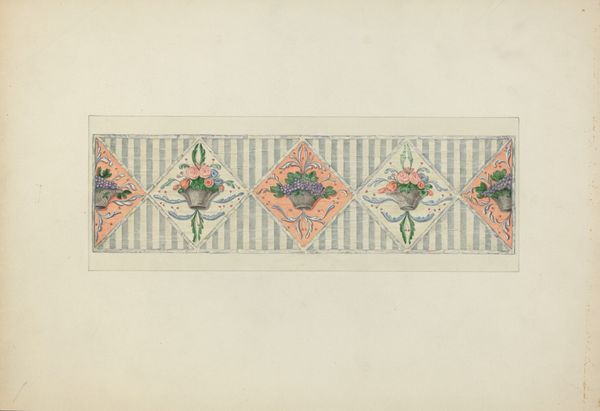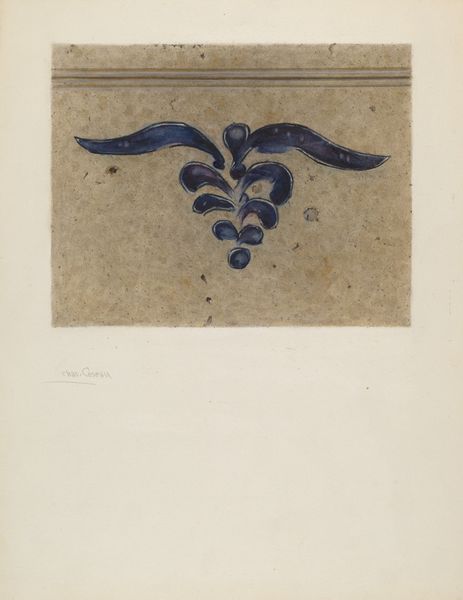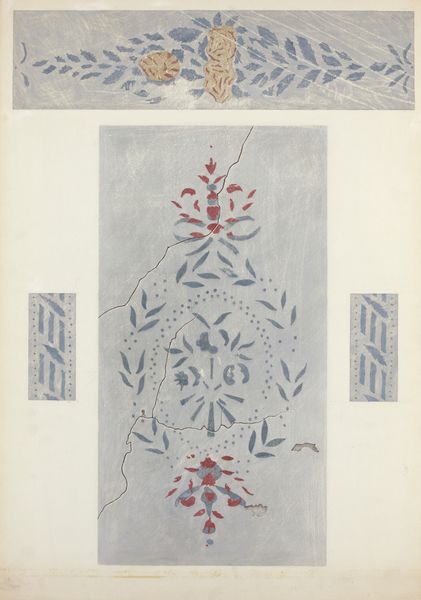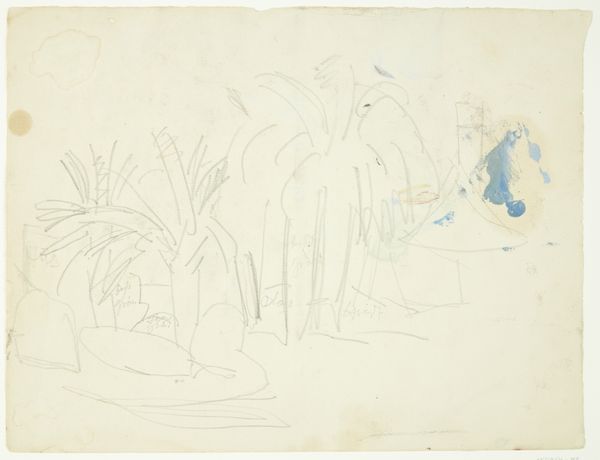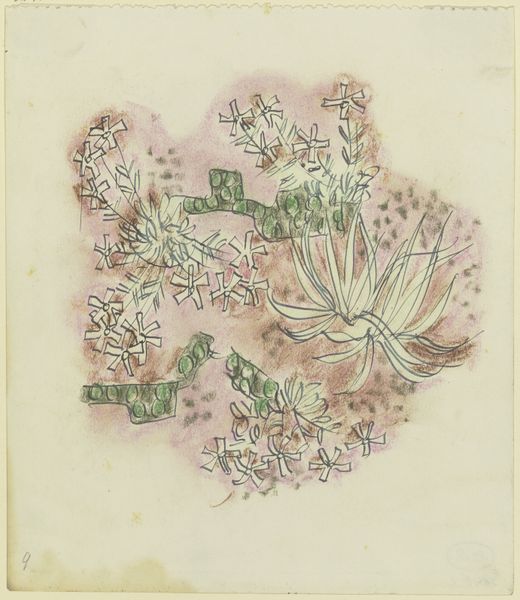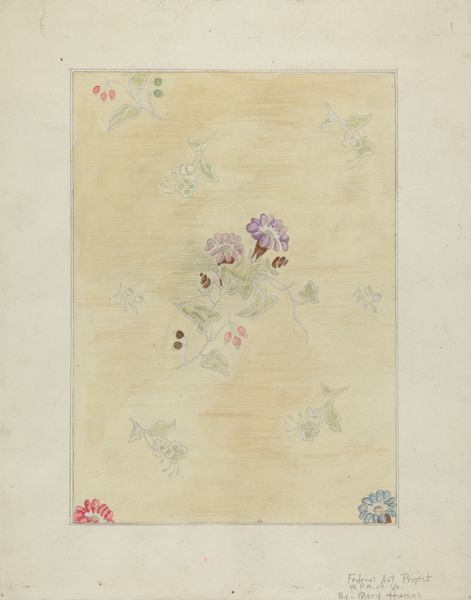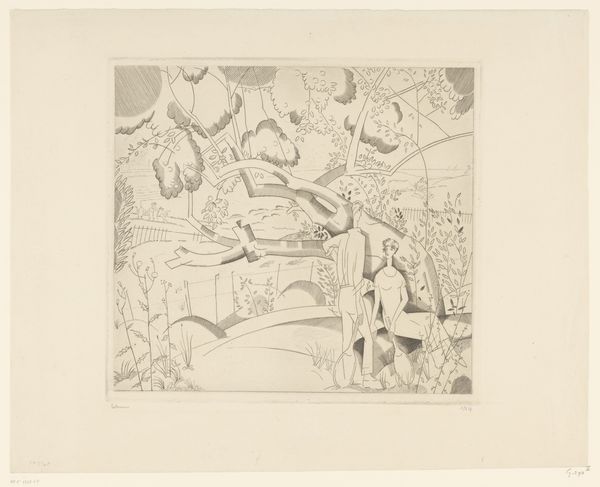
drawing, textile, paper, watercolor
#
drawing
#
water colours
#
textile
#
paper
#
watercolor
#
geometric
Dimensions: overall: 23 x 21.4 cm (9 1/16 x 8 7/16 in.)
Copyright: National Gallery of Art: CC0 1.0
Editor: This is Suzanne Chapman's "Crewel Embroidery," likely created between 1935 and 1942. It looks to be a study or a preparatory drawing, combining textile, watercolour and drawing on paper. It's quite delicate, with floral motifs rendered both in outline and in detailed stitchwork. What strikes you about this piece? Curator: What interests me immediately is the function of such a piece within its historical moment. The mid-20th century witnessed a fascinating dynamic in the arts, particularly the tension between fine art and craft. Does this preparatory sketch elevate craft to an art form, or does its connection to "craft" subtly diminish its standing in the art world of its time? Editor: That’s a really interesting point. I hadn't considered the craft aspect so much. Is the fact that it’s preparatory significant, suggesting a work intended for domestic use or display versus a gallery context? Curator: Precisely. Think about the role of women artists in that period. Were textile arts considered ‘lesser’ because of their association with domesticity, often considered the domain of women? This piece occupies a liminal space, challenging these accepted hierarchies. And how would the art market have perceived such a work then? Editor: So, you're suggesting the work invites us to consider how societal norms and expectations influenced what was valued and exhibited? Did Chapman's decision to present this as a drawing affect its reception? Curator: Absolutely. The very act of framing this textile design as a drawing, and potentially exhibiting it as such, can be seen as a political act. How can art challenge and subvert our perception of gender roles, craft traditions, and artistic worth? Editor: That's really given me a different perspective on this. It's more than just a pretty design; it's a quiet commentary on art and society. Curator: Exactly. It reminds us that art objects are not produced in a vacuum. Their meaning is always contingent on the socio-political forces at play during their creation and reception.
Comments
No comments
Be the first to comment and join the conversation on the ultimate creative platform.
